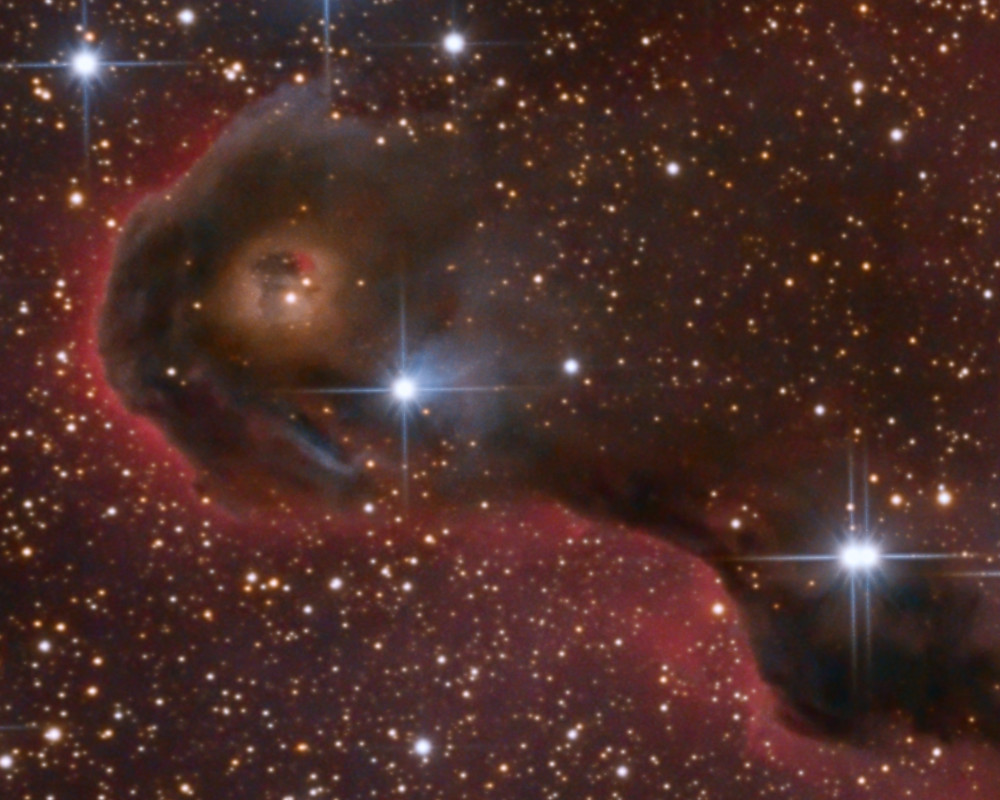vdB 142 / IC 1396A (Elephant's Trunk Nebula)

Click on image for a zoomable version
Crop in full resolution (MouseOver for object identification):

|
Location / Date |
Zellerndorf, 28. Juni, 22., 28. August, 08. September 2012 |
|
Telescope / Mount / Guiding |
10" f4,7 Skywatcher Newtonian, ASA 2" Quattro Coma Corrector |
|
Camera / Exposure |
Canon EOS 500Da |
|
Processing |
Theli, Fitswork, PixInsight, Photoshop |
|
Notes |
IC 1396A (Elephant's Trunk Nebula) is a collection of interstellar gas and dust (Globule) in the constellation Cepheus. The globule belongs to IC 1396, an HII region with an embedded star clusters (Tr 37), and is about 2.400 light-years away from Earth. The nebula is an active region of star formation and contains a number of very young stars and protostars, which are only between 100,000 and one million years old. Triggers of star formation is the strong ultraviolet radiation from the O6 star HD 206267 (bottom left, outside the field of view). Intense radiation from the star blows away lower density gas from the head. The evaporated rim of gas becomes ionized by the stars ultraviolet flux forming a bright glowing rim ("bright rims"). Intense stellar winds from the ionizing star evaporate gas and dust away from the head forming the "tail" and completing the cometary shape (cometary globule).
Through a hole in the head of the globule one recognizes two striking young stars and a small HII region. Probably have energy emissions (Jets?) formed this cave during star formation. Van den Bergh 142 (vdB 142)refers only to the small reflection nebula within the "elephant trunk" complex. It is related to the B3 type star HD239710 projected in front of the globule. |